Into the deep: The ultimate guide to freediving
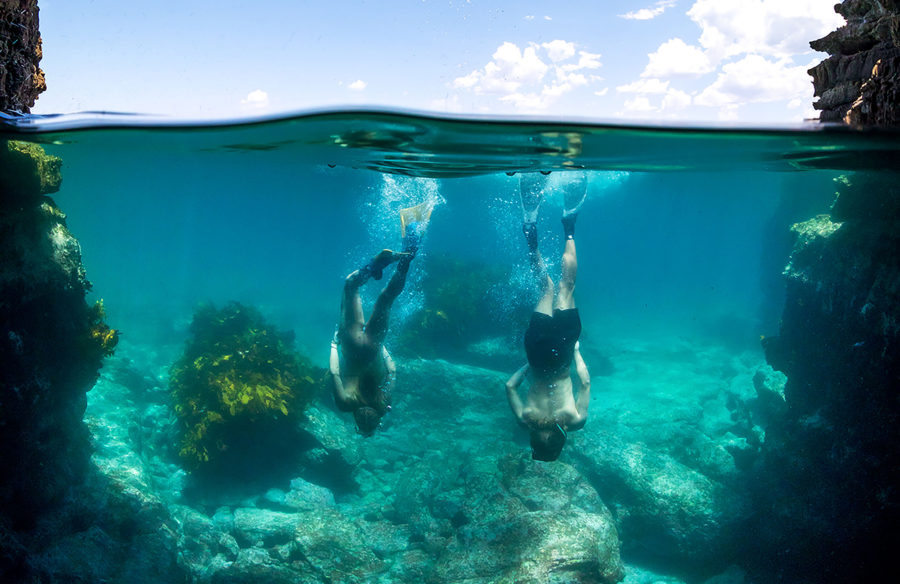
For some, the idea of submersing themselves below the surface of the ocean for minutes on end, on just one breath, is enough to scare them out of the water altogether. But for others, it is an act that’s a peaceful and joyous meditation on life itself. Welcome to the world of freediving.
Such is the latter for Dylan Boag and Lara Hindmarsh. This dynamic duo run Woebegone Freedive in Jervis Bay, on the New South Wales Shoalhaven Coast (read about our big Shoalhaven adventure here). Both are dedicated to sharing their passion for the underwater world there – an ocean of dolphins and fur seals, whales and sharks, sea caves and towering cliffs, and some of the whitest sands and picture-postcard turquoise seas you’ll ever spy. And so it was, on a mid-winter’s day, in water that had only hit teenage-temperatures for weeks, that I joined them.
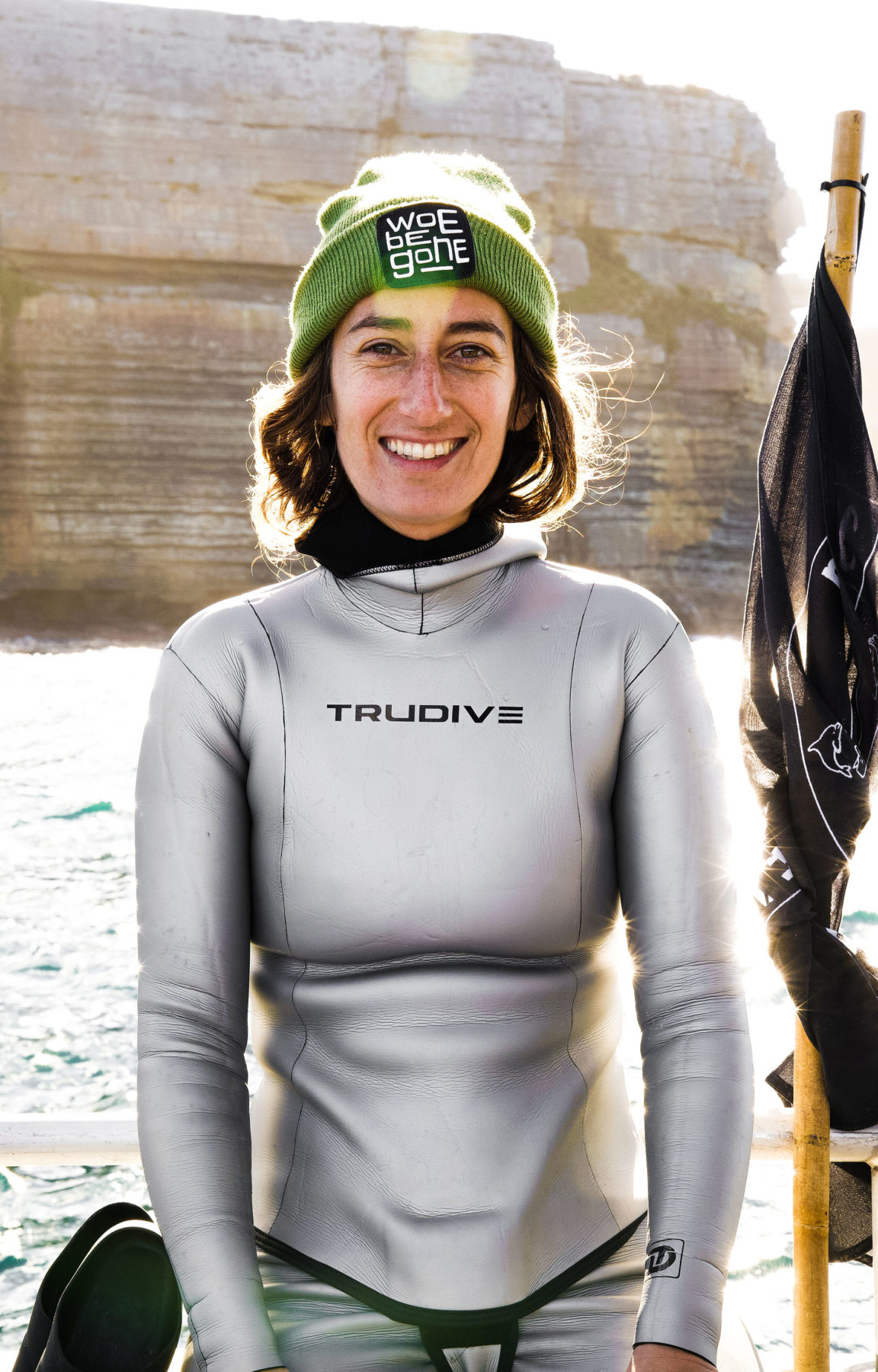
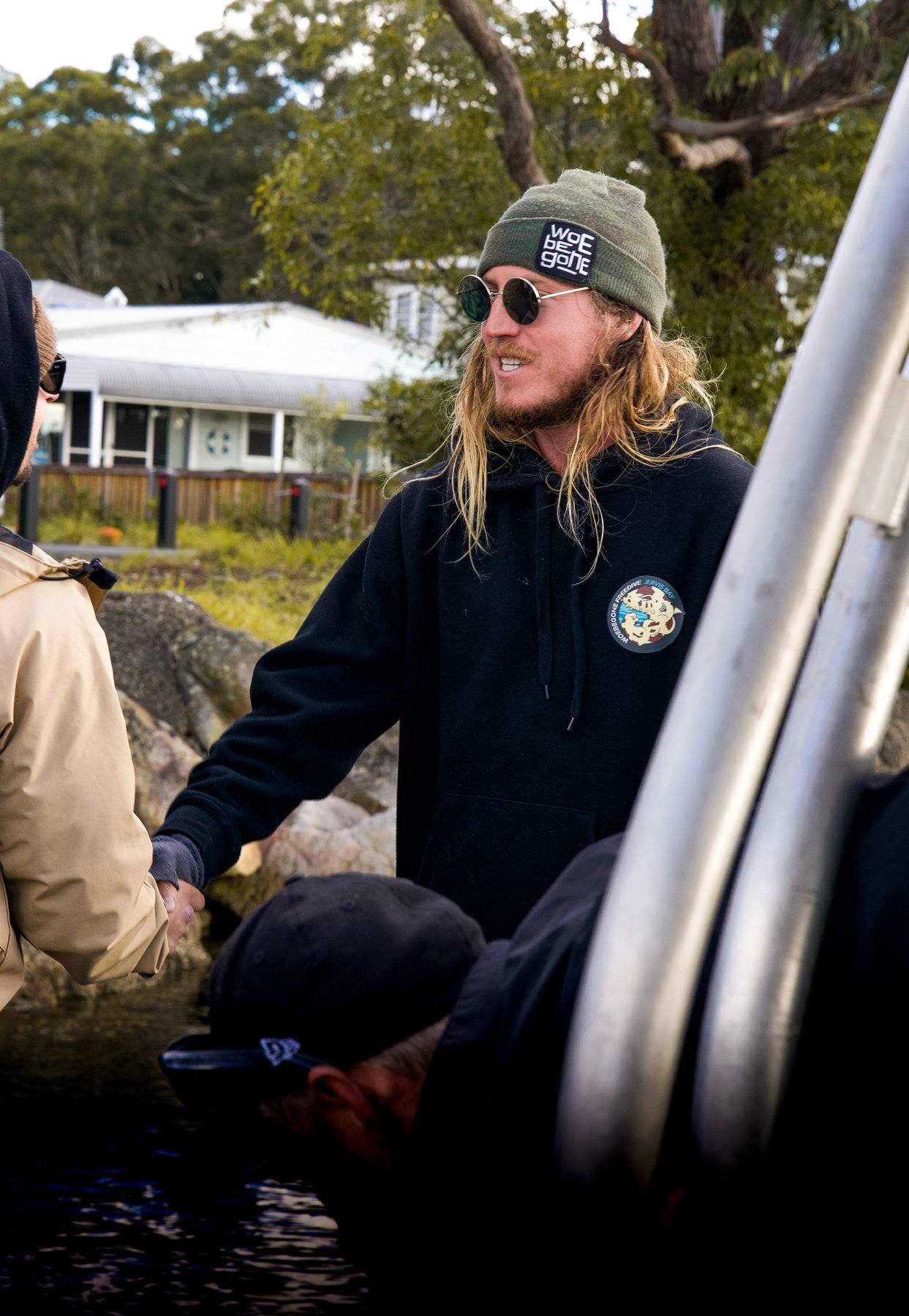
According to Dylan, there are many different disciplines in the freediving world and many reasons why people do it. For example, Static Apnea is a discipline practised in the pool where someone holds their breath and floats face down on the surface of the water much like a jellyfish under the watchful eye of their buddy with the aim to hold their breath for as much time as possible. Another discipline called Free Immersion is generally practised in the ocean. The diver pulls themselves down a weighted line aiming for depth. There is Dynamic No Fins, which is distance in the pool using a modified version of breast stroke without the use of fins. And then there are some more extreme versions, like No Limits or ice diving. These test and expand the capabilities of the human body and mind (if you’re interested, watch the documentary Hold Your Breath: The Ice Dive, which delves into this world).
Dylan, who has been freediving for “a short time of 10 years” says he also “refers to freediving as glorified snorkelling, though I’m sure what the majority of freedivers would think about that”.
“Freediving, to me, is intensely personal and a lifelong journey, and I’m at the stage where I really enjoy sharing knowledge and teaching others. More so than going diving for my own leisure.”
What is freediving?
“I would simply define freediving as the act of holding your breath for as long as comfortable or diving as deep as you can below the surface of the ocean,” Dylan says.
“It differs from snorkelling in the fact that dives are generally much deeper, with set protocols for preparation and safety. In order to dive deep, you must learn how to breath efficiently and how to prepare your mind for the dive or breath-hold using different mental and visualisation techniques.
“Not many people realise that when you learn to freedive you are actually learning a form of mental training or mind control. Freediving is intensely psychological. When you hold your breath or you aren’t able to breath at any given moment, many emotions and anxieties are brought to the surface. I have finished a dive in tears or intensely angry with no reason to be. I believe that it has something to do with denying your body’s primal urge to breath. In the industry we say that freediving is 95 per cent mental and only 5 per cent physical. So when you hold your breath and dive below the surface of the ocean you are actually diving into your mind and psyche.
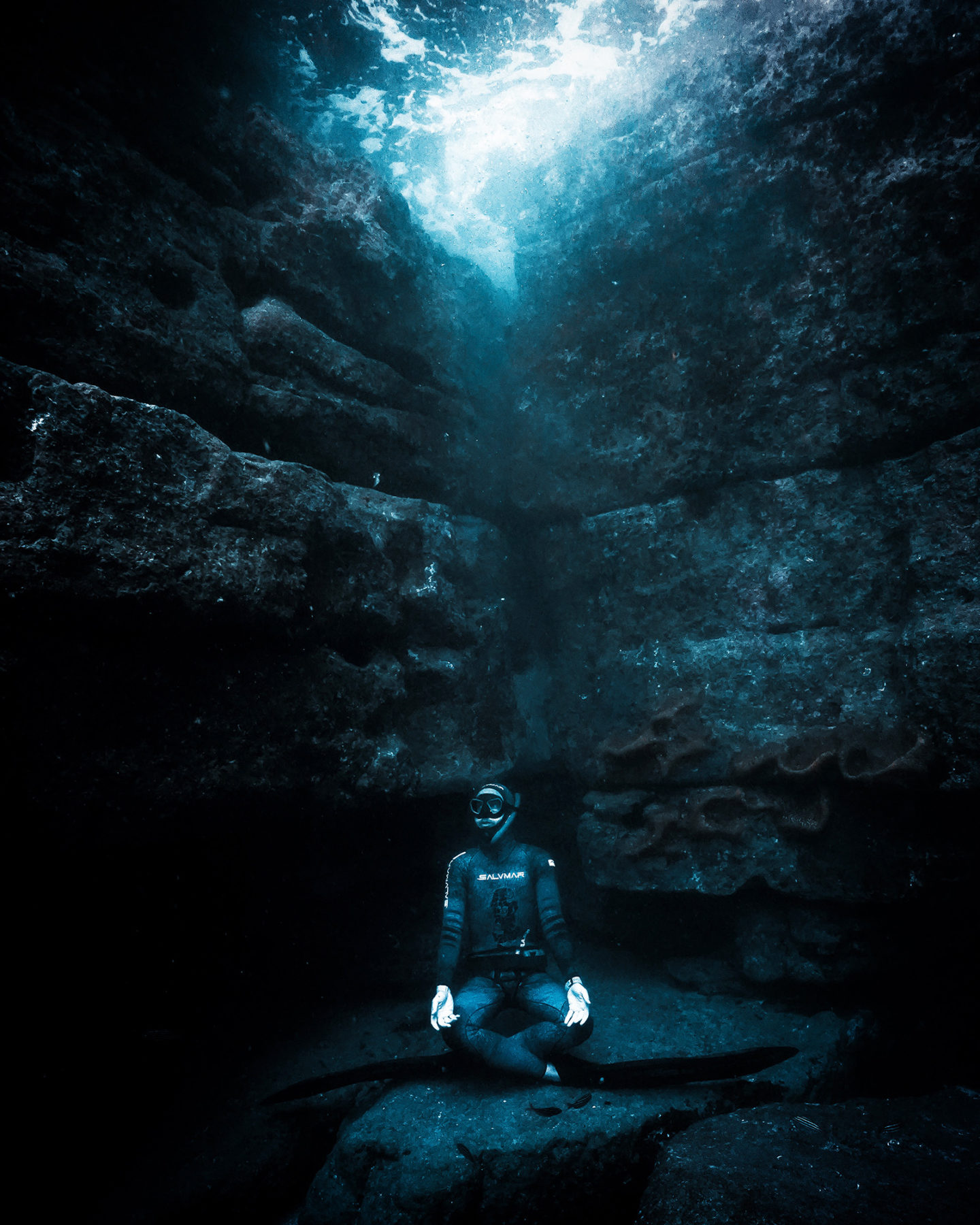
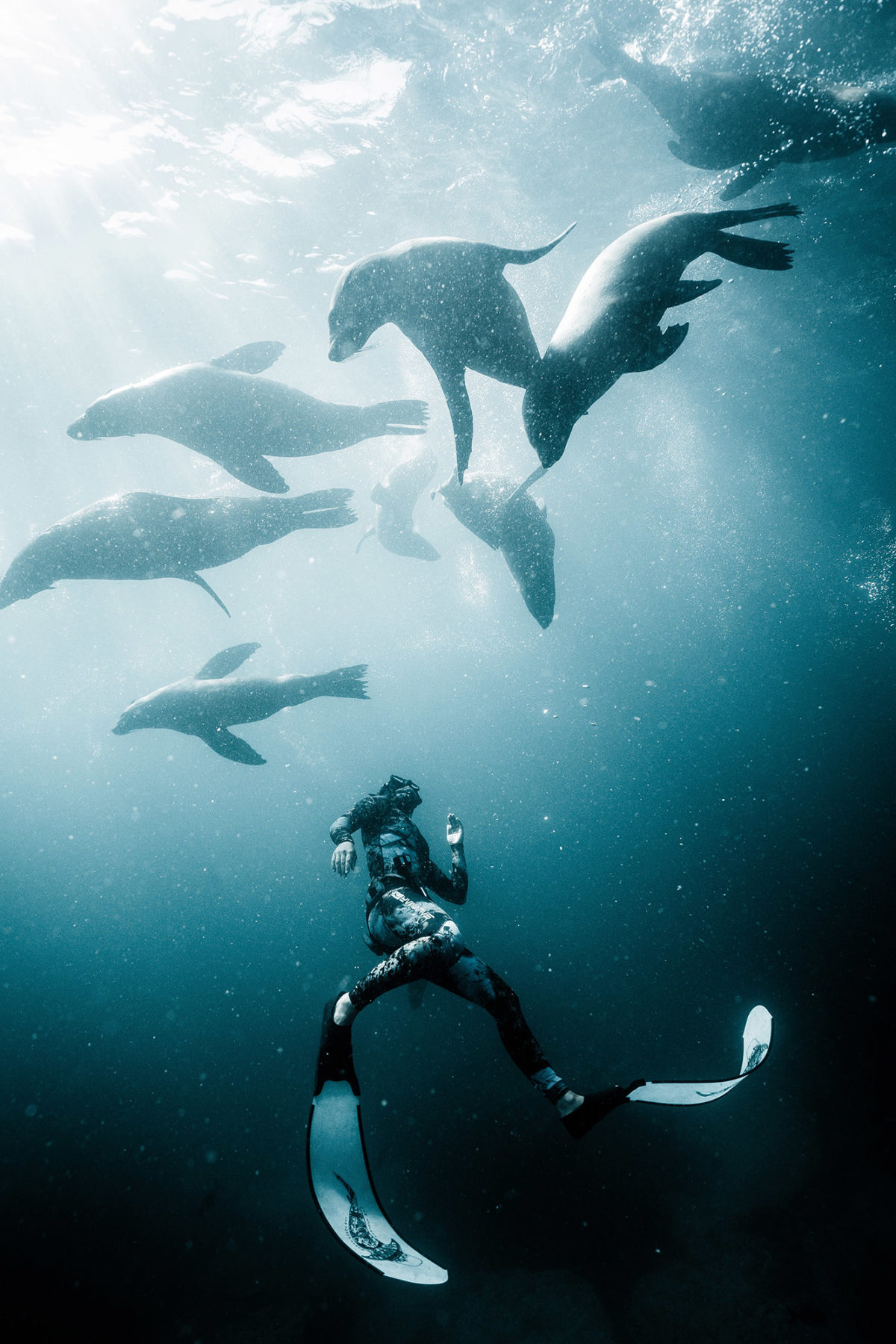
“This idea, then, leads me to my deeper and more complex definition of freediving. It’s the engaging of your five senses, being intensely aware of everything around you. Filling up your lungs and diving below the surface or holding your breath, uncoupling the senses and delving within the body and mind. Being totally present in the moment. In ‘the zone’ as it’s referred to in sport psychology.
“The ultimate aim of freediving is to be completely relaxed. Relaxed in the mind, body and breath. Relaxed even though you may be floating around in deep choppy and murky water. Your outside environment cannot disturb your inner peace.”
The gear you need
In its simplest form, no equipment is required. Indigenous cultures have been diving without equipment for millennia. There is also an entire discipline of freediving devoted to not wearing fins or a mask. According to Dylan there’s nothing more satisfying then diving down past the scuba divers at 20m without fins!
“That being said, a decent mask and snorkel is a must,” he says. “In a mask you want to look for a comfortable soft silicon that seals around your eyes and nose with no leaks. You can test this by holding the mask up to your face and breathing in through your nose. The mask should sit firmly on your face. Next you want to ensure that the mask is low volume with minimal air space between your eyes and the glass. This is because when you dive down, as the pressure builds, the air compresses which means that you will periodically have to add air into the mask by blowing out through your nose. The smaller the volume, the less air you will need to add. The snorkel should be simple, with no bells and whistles, but also a soft and bendy material.
“Fins for freediving are generally longer than scuba or snorkelling. They also have a full foot pocket. This allows for greater efficiency and power, which in turn saves energy meaning longer bottom time. Entry level fins are made from plastic and can be quite rigid. This is fine for beginners. As you learn to dive deeper you can progress to fibreglass or carbon-fibre fins with more flex.
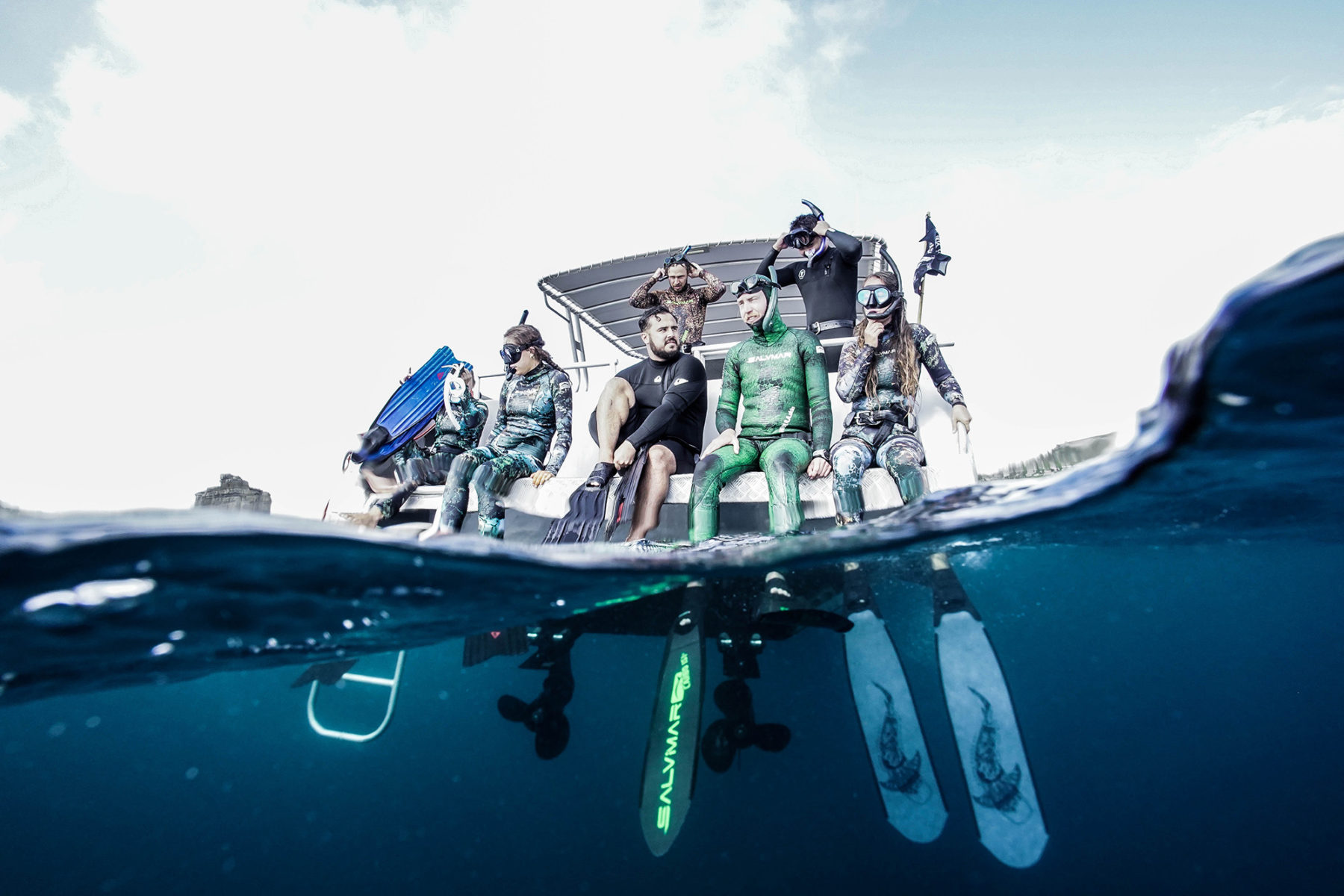
“Depending on the water temperature a wetsuit is vital. Water below 28ºC you will need to consider a wetsuit as your body loses heat faster than in air. You are also spending considerable time floating in stillness. Under 20ºC I would consider a 5mm suit and a hood as you lose about 20 per cent of your body heat through your head. I personally don’t wear gloves or booties as having cold feet isn’t detrimental to your health and I like to be able to feel the line in my fingers and feel the water temperature. Freedivers generally wear an open cell neoprene suit that is two pieces, pants and top. Open cell sticks to your skin so needs to be lubricated when putting on. The upside of this is that they are much warmer than your standard surf or scuba suit. Having them in two pieces allows for more manoeuvrability.
“A weight belt with lead weights is needed to counteract the buoyancy of your suit and your full lungs. The amount of weight you need depends on each person and their equipment, but you should still be able to float comfortably on the surface. I generally weight myself so that I’m ‘neutrally’ buoyant at a 10m depth. This means that I neither float or sink, I am suspended weightless in the water column.”
Beginner basics
Beginners should take a slow approach and make sure every dive is a positive one. The number one rule is to never dive alone. It’s the perfect activity to do with someone else – a spouse or friend – find someone to train with and enrol in a beginner course.
It’s essential to learn all the fundamentals from an experienced diver from the beginning and move on from there with a solid base. “I watched a lot of out-dated YouTube videos and learned some bad habits, which had to be undone,” Dylan says. “Incorrect information can be fatal, and the sport is constantly evolving when new research comes to light.
“You don’t need to be an experienced water person to do a freediver course. All you need is the willingness to learn and the willingness to put yourself out of your comfort zone.
“It’s important to remember that the aim of freediving is to be relaxed. So relaxed you could fall asleep. It’s a lifelong journey that can’t be rushed, so slow down and enjoy the ride. Everyone is at different levels of confidence and ability in the water and will progress at different speeds. It’s a very personal journey so don’t be discouraged if others are progressing faster.
“I like to treat every dive or snorkel as a meditation practise. My aim is to get out and enjoy nature. It’s important to approach each dive with that mindset. Be positive and don’t try to gain anything or push yourself too hard. Nature will reward you with this approach. Learning the basic physics and physiology behind breath-hold diving will help to explain what is happening to your body when you hold your breath.
Topics you should touch on include:
• Pressure and Boyle’s law
• Buoyancy and Archimides Principle
• The relationship between oxygen and carbon dioxide during a breath hold
• The effects of breath holding
• Short- and long-term adaptations of the body.


“A particularly fascinating short-term adaptation of the human body is the Mammalian Dive Response (MDR). It is left over from our amphibious ancestors millions of years ago when they crawled out of the sea. It engages when the face is immersed in water and you hold your breath. When the MDR engages, your heart rate slows dramatically, blood moves to your organs and brain. Your lungs also swell with blood to prevent them from imploding under pressure. It also makes you want to pee. As you become more aware of your body, you can feel your MDR engaging. We share this response with all marine mammals such as seals, whales and dolphins. This leads me to believe that we are built to freedive.
Equalisation is probably the hardest skill for beginner divers to learn. “I find it’s the thing that holds most people back from achieving the 12m depth requirement on the course. It usually takes a few training sessions to learn the mechanics behind equalisation. So essentially when you dive down, the air spaces in your body are compressing. The ears (more specifically the middle ear) are one of the main spaces that need to be equalised. As you descend down the increasing pressure of the water pushes inward on your ear drum. When you equalise you are counteracting this pressure by pushing air from your lungs or mouth into your middle ear. Middle ear and sinus injuries called Barotraumas are the most common freediving injury.”
In the classroom
During a classroom session with an instructor you
will cover:
• Basics of breathing and relaxation
• Basics of Frenzel equalisation
• Visualisation techniques
• Dangers of hyperventilation
• Trauma from hypoxia
• Buddy procedures
• Rescue procedures.
After theory and a classroom session, the next stage is to take what you have learned to the pool and put it into practise. The pool is the perfect place to build confidence; learn how your body reacts to a breath-hold and work on your finning, buddy and rescue techniques. The aim in the pool is to learn the process of the breath-hold and learn to relax throughout the entire experience.
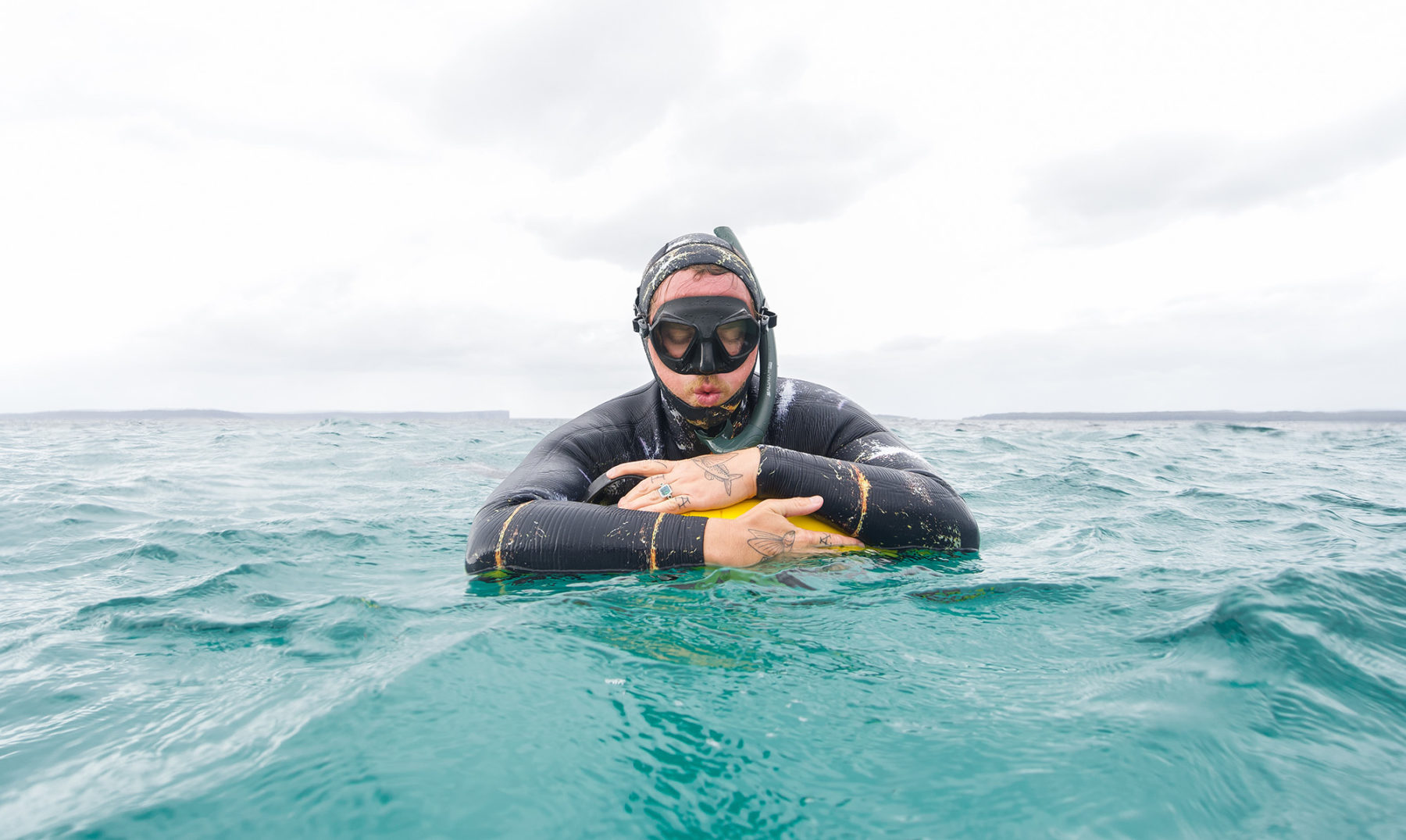
The challenge is taking that relaxation to the open water. The aim is to slowly build up to a comfortable 12m dive. In the open-water session it’s normal to practise three disciplines of freediving:
• Free immersion
• Constant with and without fins
You will also learn how to duck dive efficiently and rescue a blacked-out diver.
“I personally have a pass rate of 50 per cent with my students in the two days. The reason being is that the course is very challenging and requires quite a lot of training. You should not at all be discouraged if you don’t pass in the two days. Remember that freediving is a life-long journey and depth doesn’t really matter. Connecting with nature and your breath is the objective.”
The dangers of freediving
“Freediving has a reputation for being dangerous. But I honestly believe if you follow a few golden rules it is very safe. Much safer than scuba diving. The no-pain no-gain philosophy popular in gym and sporting culture has no place in freediving, which is another reason I am a big fan. Freediving also has no place for big egos, and generally speaking, those with big egos do not last long in the sport. As it is mental training, the approach should be slow, gradual and within the comfort zone. The subconscious mind is very powerful; a negative experience can imprint on the subconscious, which can lead to an uncontrolled blackout.
“A blackout is your brain’s way of keeping you safe. I like to think of it as standby mode on a computer. The incredible thing with a blackout is that the throat closes to protect the airway and once the face is exposed to air, the brain and body reboots. This is why it’s essential to dive or practise in the pool with a trained buddy. To minimise your chances of a blackout occurring underwater it’s important to never hyperventilate before a dive, and progress slowly and within your comfort zone.”
The benefits of freediving
It’s the ultimate way to explore the ocean and connect with nature. It’s quiet and less intrusive, which results in more relaxing interactions with marine life. When you float silently and slow down your breath, incredible things happen. Dylan says he has had sharks come right up to his fins (maybe not everyone’s idea of rapture!) and Lara has had two humpbacks come up to face her from the depths.
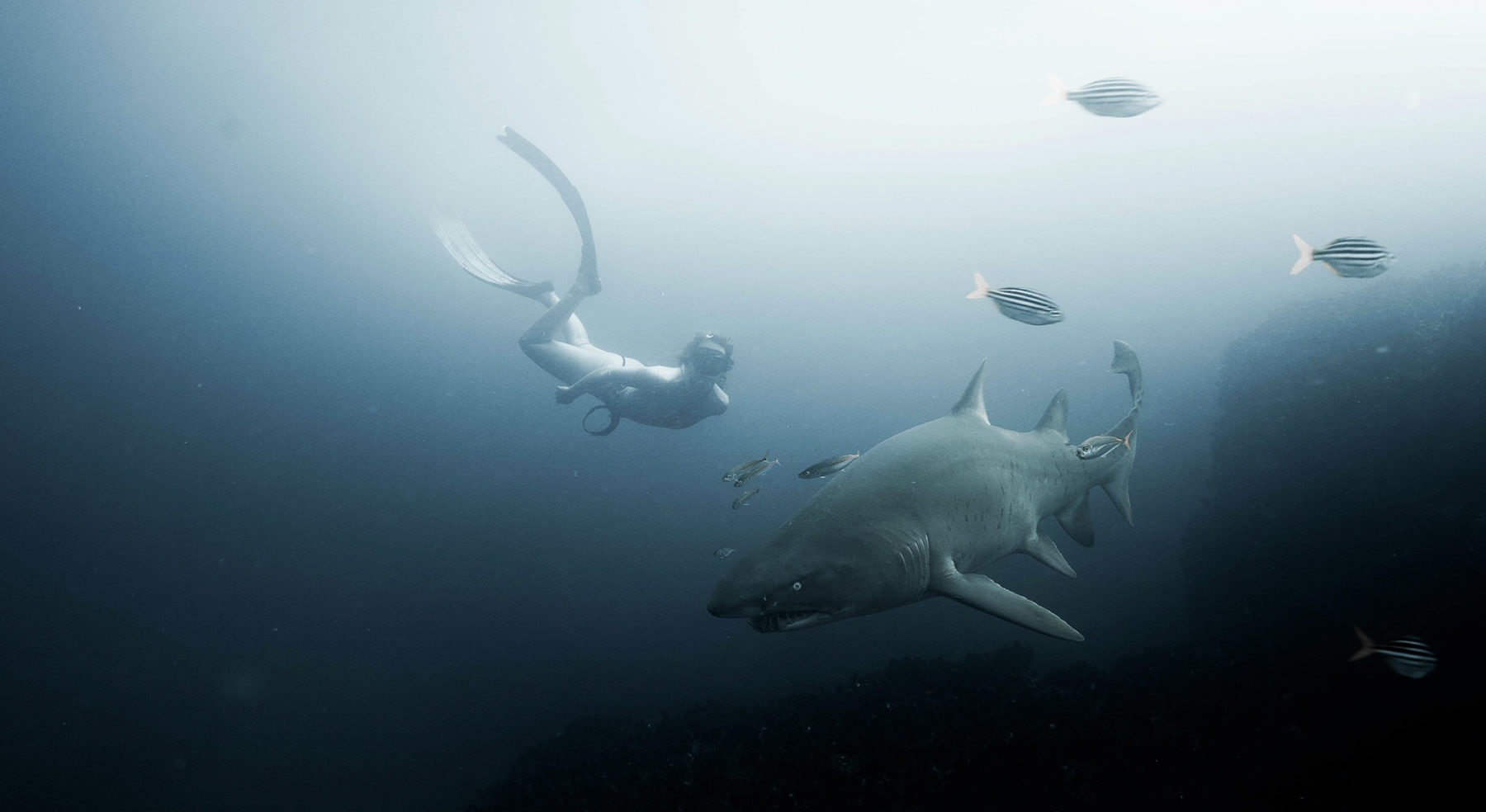
• It’s an activity that you can undertake well into old age. The Ama woman of Korea freedive well into their eighties. Natalia Molchanov, one of the most decorated competitive freedivers, didn’t start competing until she was 45 years old.
• Learning the meditation techniques helps you to deal with stress in day-to-day life as well as learning to cope with fear and anxiety.
• Creating awareness of your breathing and learning to breathe more efficiently.
• Less bulky equipment for travel.
• Freediving training increases your bodies efficiency with oxygen and tolerance of CO2 and lactate build-up, which can give you a competitive advantage in any sport.
• Even if you’re not interested in deep dives, learning how to freedive will vastly improve your snorkelling and confidence in the ocean.
• Gently pushing the boundaries of your comfort zone will reveal things that you never thought you would be capable of. The skills are lying dormant in everyone.

